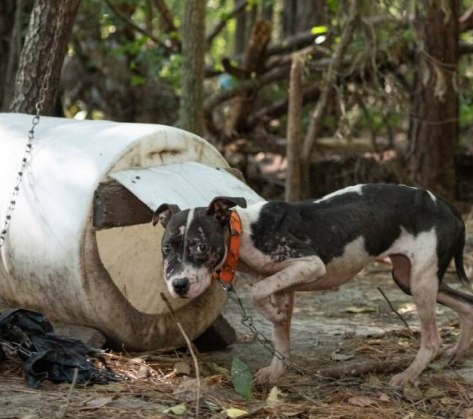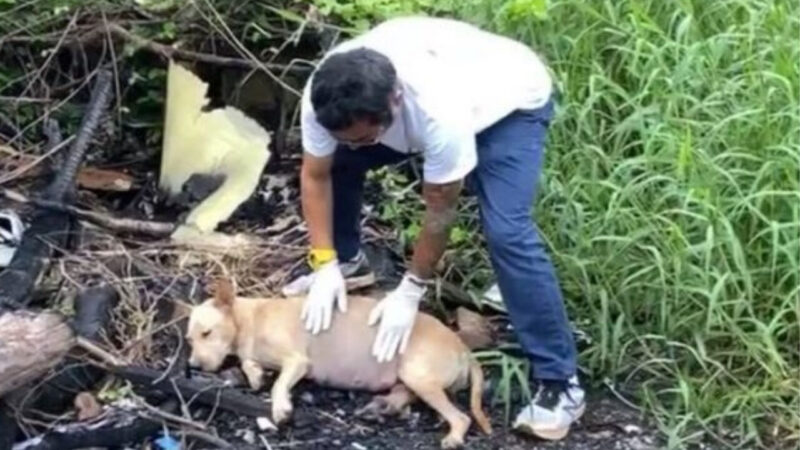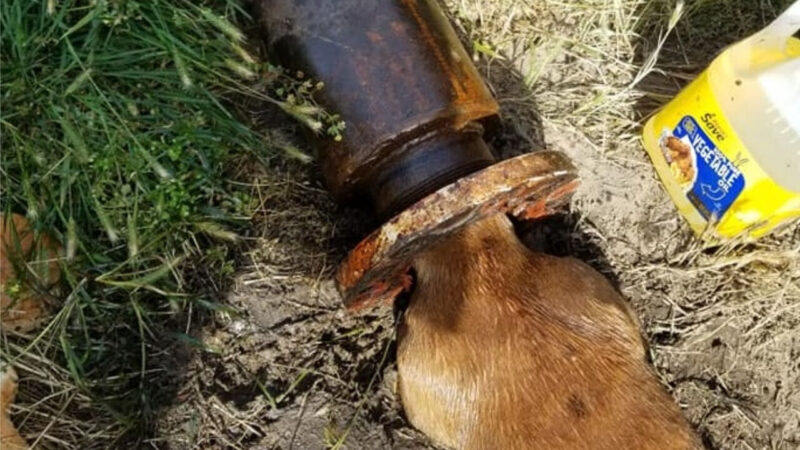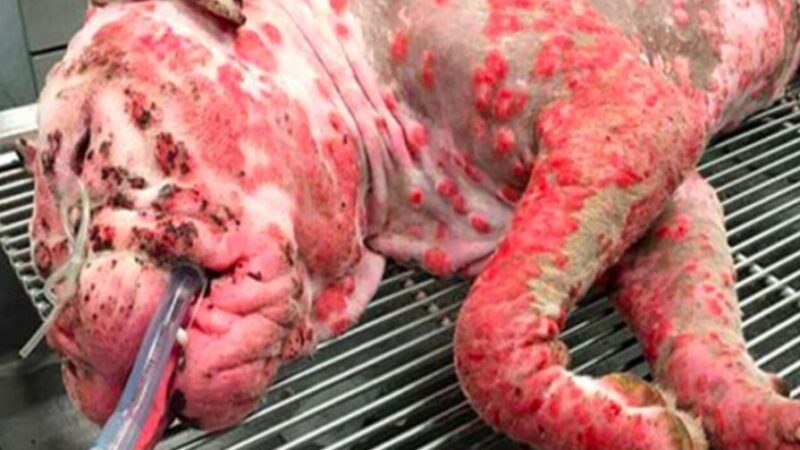Over 300 Dogs Rescued From Largest Dogfighting Ring Bust In South Carolina…b

Over 300 Dogs Rescued From Largest Dogfighting Ring Bust In South Carolina
Over 300 dogs have been rescued from the largest dogfighting operation bust in South Carolina. Federal and local law enforcement arrested more than 20 people for animal cruelty and dogfighting.
According to a press release by The U.S. Attorney’s Office District of South Carolina, officers interrupted a scheduled dogfight on Saturday evening and the following morning issued 23 search warrants.
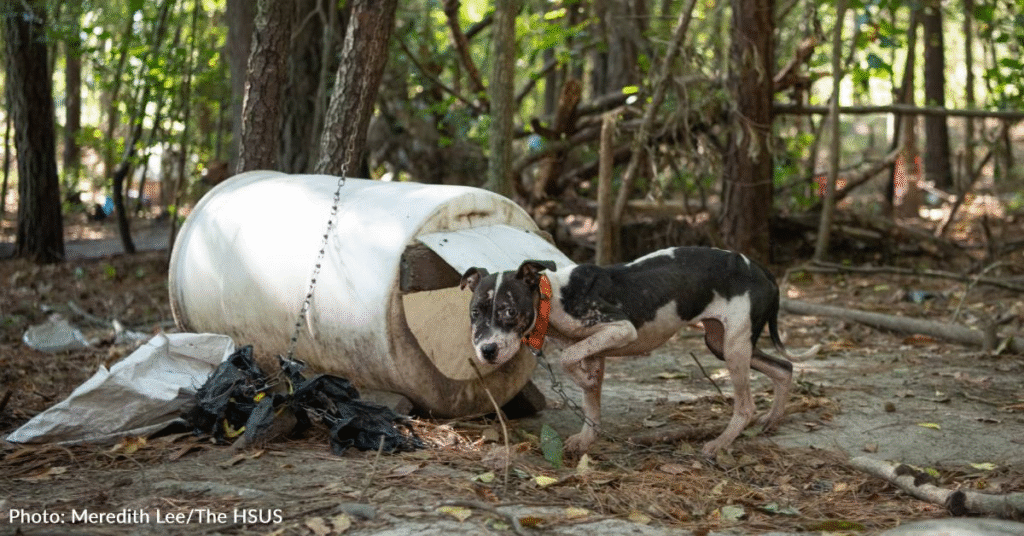

305 dogs were rescued and handed over to The Humane Society of the United States (HSUS) and Bark Nation who were onsite to help rescue the dogs from the deplorable conditions. Many were found with open wounds associated with dogfighting and with heavy chains around their necks.
Kitty Block, president and CEO of HSUS, said, “At those sites, our rescue team found one tragic scene after another: nursing mother dogs in wire hutches with no apparent access to water or food, dogs on heavy chains or in filthy pens. A number of dogs appeared to have suffered broken bones which had not healed properly.”
It was clear that these poor dogs were mistreated and neglected. At one location, Kitty recalls, “Some had no apparent access to food, water or any shelter besides flimsy, overturned barrels. Many dogs’ bodies were scarred, and their body language—cowering, hunched shoulders, lowered heads and fearful, timid eyes—hinted at the treatment they had endured.”
Even after suffering at the hands of humans, many still wagged their tails as the rescue team approached.

They are finally getting the care and love they deserve at undisclosed locations thanks to HSUS, Bark Nation, and RedRover. Kitty Block wrote, “As distressing as it is to see the horror these dogs have endured, I find some peace in knowing they won’t have to suffer another day in these terrible situations.”
BarkNation shared that the rescued dogs are learning how to be dogs. “They’re undergoing medical treatments, refeeding schedules, and lots of decompression time. 10 of them are positive for Babesia, and 4 of them are positive for Heartworm disease. Many are emaciated, dehydrated, have open wounds, and bear scars of their past lives. But, in typical dogfighting survivor fashion, they all have so much love to give and our team is already head over heels for each and every one of them.”
Dogfighting is illegal and a felony punishable by up to five years in prison.
“To force dogs to fight, often to the death, for the enjoyment of others is not only a federal crime, it is also cruel, sadistic, and can create a haven for other illicit activities involving drugs and firearms,” stated U.S. Attorney Adair F. Boroughs. “This joint operation, which has been months in the making, makes clear that dogfighting operations will find no refuge here in South Carolina. I especially want to thank our state and federal partners, the Governor’s Office, and our community partners for their leadership and work on this issue.”

One by one, the dogs are beginning to show signs of hope. As the days pass at their temporary shelters, volunteers witness quiet transformations—once-fearful dogs slowly lifting their heads when approached, some even taking their first cautious steps toward a human hand. It’s in these small, tender moments that the scale of the emotional healing ahead becomes clear. Volunteers spend hours simply sitting nearby, reading aloud or gently speaking, allowing the dogs to acclimate to a world without violence. Many of the rescued animals are experiencing kindness for the very first time, and even the most frightened among them are beginning to realize they are finally safe.
For the medical teams, the work is relentless but deeply rewarding. Every dog receives a full medical evaluation, including bloodwork, wound care, and vaccinations. Some require surgery to repair untreated fractures or remove infected tissue. The dogs with Babesia are placed on careful treatment regimens, requiring daily monitoring. Those with heartworm disease begin a long road to recovery that involves medication, rest, and limited activity. Every dog is assigned a unique care plan, tailored to their physical and emotional needs. Despite the trauma etched into their bodies, many have already begun responding positively to treatment, showing improved energy levels and brighter expressions.
But the work doesn’t end with medical care. Behavioral rehabilitation is just as critical. Teams of trainers and animal behaviorists work tirelessly to help the dogs overcome their past. For some, this means learning to walk on a leash without cowering. For others, it’s becoming comfortable being indoors for the first time. Playgroups are carefully introduced for those who are emotionally ready, providing them with the opportunity to engage with other dogs in a safe and controlled environment. These sessions are monitored closely for signs of stress, but also celebrated when a tail wag or tentative play bow emerges.
Stories are already beginning to emerge of breakthroughs. One young brindle dog who had been chained most of his life was initially so terrified he refused to leave the back corner of his kennel. Volunteers took turns simply sitting outside his enclosure each day, offering quiet company. After a week, he cautiously took a piece of chicken from a caregiver’s hand. Two days later, he accepted a gentle touch. It was a small moment—but in the world of rehabilitation, it was monumental.
Meanwhile, the legal process continues in the background. The arrested individuals now face serious charges, and the evidence collected during the raids—video footage, dogfighting paraphernalia, betting records, and forensic vet reports—is expected to play a key role in the prosecution. Animal welfare advocates hope this case will not only bring justice for the dogs but also send a strong message to others engaged in similar activities across the country.
Community support has poured in from around the nation. Donations of food, toys, medical supplies, and bedding have overwhelmed the temporary shelters. Kind messages from the public flood social media posts shared by HSUS and Bark Nation. Many people ask when and if these dogs will be available for adoption. Rescue organizations are carefully evaluating each dog’s progress to determine their long-term placement options. For some, adoption may be possible within months; for others, the journey may be longer, with potential placement in foster homes or sanctuary environments better suited for ongoing emotional recovery.
RedRover’s emergency response team has played a key role in providing emotional care for the dogs. Their volunteers specialize in animal trauma and work closely with the dogs through a process known as emotional de-escalation, helping them feel safe and build trust. “We meet the dogs where they are,” one volunteer explained. “If that means sitting silently in their presence for hours, we do it. Every single dog deserves that patience.”
While the road to healing is long, the rescuers remain hopeful. They remind each other daily that progress isn’t measured by speed, but by consistency and compassion. Each dog saved from this horrific ring is a life reclaimed—proof that resilience can flourish even in the darkest of circumstances.
As law enforcement continues to investigate the broader network potentially involved in dogfighting, advocates are also pushing for legislative reforms. They argue that stronger penalties and more robust enforcement of animal cruelty laws are necessary to dismantle these operations permanently. Education is also a focus, with organizations working to increase public awareness about the signs of illegal dogfighting and how to report suspected abuse.
For the dogs who have lived their entire lives without affection or safety, this moment marks a profound turning point. They are no longer tools in a cruel game of profit and violence. They are survivors. And with each passing day, as they step out of fear and into the light of care and dignity, their story grows more powerful—a testament to the unwavering strength of animals and the people who fight for them.
